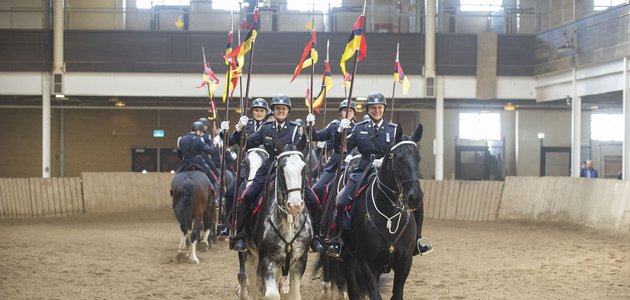Seven new Mounted officials praised their outcome in finishing three months of far reaching preparing permitting them the exceptional perspective on policing the city riding a horse.
On April 14, the graduation ceremony took place at the Horse Palace. During the ceremony, the new riders had the opportunity to demonstrate crowd control strategies and demonstrate their ability to ride in unison on a musical ride.
Chief Myron Demkiw told the graduates, “That was a great way to share your talents and celebrate today, an important day in each of your respective careers.” There are many reasons why this graduation day is significant. It is surely an opportunity for us to commend your prosperity. You can also take this opportunity to honor the 137-year legacy of the Mounted Unit of the Service. Additionally, you each now play a significant role in that history.
Demkiw reminded the alumni that Mounted officials assume a basic part in a few significant policing tasks and everyday work.
“They are priceless during showings, looks for missing individuals and they make a fantastic showing overseeing enormous groups,” he said, of the unit with a steady 27 ponies. ” Once in a while their presence alone is all that could possibly be needed to assist with guaranteeing that enormous groups stay tranquil. Additionally, when performing ceremonial duties, our Mounted Unit excels at numerous community and police events.
Lisa Kostakis, interim chair of the Toronto Police Services Board (TPSB), was also present to congratulate the graduates of the Basic Equitation Course, which required them to ride five hours a day for 15 weeks.
The Unit’s new recruits, according to Training Sergeant Kristopher McCarthy, were completely committed to the training.
He stated that “they came in with a willingness to learn and gave 100% during their time here.”
Before applying for the Mounted Unit, officers must have at least three to five years of regular policing experience on the road.
“We are taking officials that are by and large in their late 30s as far as possible up to their 50s and acquainting them with another fundamental ability and movement that is extremely taking a stab at the body. The veteran of the Mounted Unit stated, “They are asked to push themselves into that uncomfortable state, but it pays off in the end with the reward of riding one of our horses.”
“The typical individual taking horseback riding examples will do an hour week by week. The officials we train do around three to five years of riding experience when the course finishes up,” said McCarthy. ” They start trotting very early in their training, so we push the envelope. From that point, they figure out how to control their creatures the whole way through the various strides of riding while at the same time having that ideal seat to keep up with that control the entire way through.”
According to McCarthy, the Mounted Unit, which was established in 1886, has evolved from primarily providing crowd control to supporting Divisions as a high-visibility form of policing that enables officers to make connections in the community.
Constable Emma Morley comes from a family with an affection for ponies.
Her mother was an accomplished rider as well. Her love of horses was so strong that she once took a one-way bus ride to a stable to muck it out in the hopes of getting a free ride on a mount. Her great grandfather was a member of the British Cavalry Mounted Unit.
Morley, who immigrated from England with her family when she was five years old, maintained her focus on the Mounted Unit as a career objective when she joined the Toronto Police Service fourteen years ago.
Through her extensive work as a police officer managing large crowds, she got a sense of the Mounted Unit’s role.
Morley stated, “The horses came in and covered us while I was on my bike or on foot trying to control crowds after people were leaving bars at night.” They were a barrier that stopped people from crowding around us as we dealt with problems.
Additionally, she observed the other facet of mounted policing as a means of community engagement.
Morley commented, referring to the numerous positive connections, “The other thing I enjoy about the unit is that people love taking pictures with officers on their mounts.”
Preceding signing up for the preparation, Constable Kenneth Fung had never ridden a pony.
He stated, “I didn’t know what was involved, despite the fact that I am fascinated with horses.” When I first saw these enormous horses on the first day, my first thought was how I would get on top of one. I was truly fearful not knowing what’s in store. I was energized.”
According to Fung, the arduous training prepared them for the job.
“This is the longest course I have been on, and I was accomplishing something all the way out of my usual range of familiarity,” he said. ” We now have the skills we need to do the job thanks to the dedicated trainers.”
Since joining the Service in 2009, Fung has been assigned to the 33 Division and, most recently, the PSRT.
“While with PSRT, I perceived the strength of the Mounted Unit through different fights in the city and different occasions,” he called attention to. ” They have helped me out of some scary situations, which has made me appreciate the horses and the officers who ride them more.
Sergeants Joslyn Watson and Rick Arsenault, as well as Constables Sandy Hazel, Grant Pritchard, and James McCabe, were the other 2023 graduates.
Matt Scarlino, Steve Schlender, John Sham, and Laura Foulds, all of whom joined in 2020, were also able to attend the graduation because theirs was postponed due to the pandemic.





